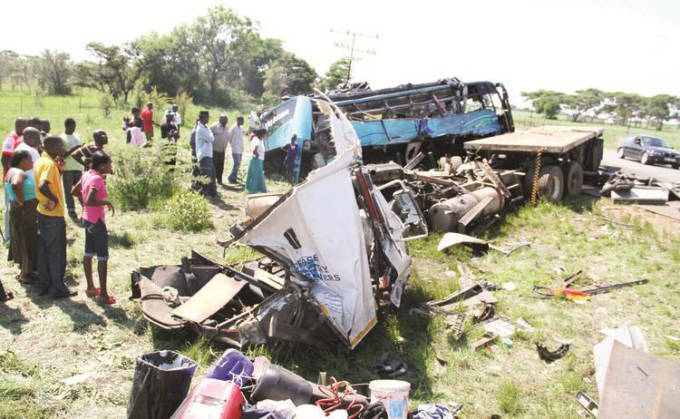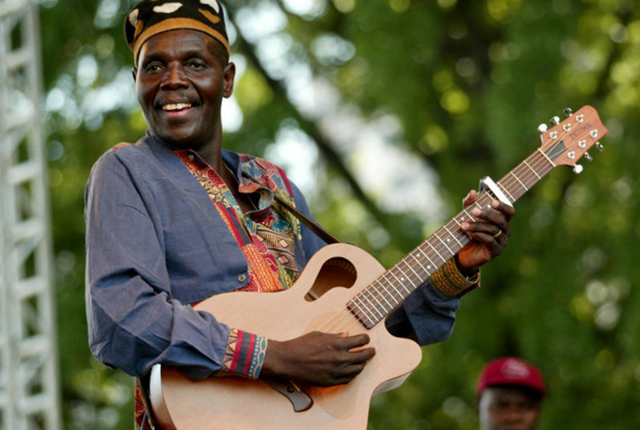Villagers clamour for solar products


Mbuya Emma Mutema charges her phone on the newly installed solar system at her homestead in Ward 5, Mhondoro-Ngezi recently
“Africans have been waiting for decades for the mains electricity which the rich world takes for granted. Sub-Saharan Africa’s 910m people consume less electricity each year than the 4.8m people of Alabama. Many more who are on the grid suffer brown-outs and dangerous surges in current. But a solar revolution is afoot.” – The Economist, January 15, 2015
The excerpt from a featured video by The Economist could ring true in the Zimbabwean context.
Villagers in Mamina, Mhondoro-Ngezi of Mashonaland West province would have not seen the video but its findings are synonymous with the developments in their villages.
The Economist says in 2009, just one percent of sub-Saharan Africans used solar lighting.
The number, according to the article, grew to five percent an equivalent of 11 million people.
The Economist also quoted the International Energy Agency, a Paris-based government think-tank, which reckons that 500m more people will have solar electricity by 2030,
Why is solar power spreading so fast in Africa? The article questions!
There are three main reasons noted by The Economist.
“First, solar panel technology has improved. Efficiency gains and mass production mean that modern photovoltaic panels have plunged in price per watt – to around US30 cents.
“Second, low-energy bulbs have got better and cheaper. Modern solar lamps cost as little as $8—they charge by day and give light by night.
“They replace costly and dangerous alternatives – Africans waste $10 billion a year on kerosene (paraffin). Even worse are candles, open fires—or darkness, which hurts productivity and encourages crime.”
The third reason, according to The Economist, which is also a crucial development is in storage, as lamps are needed at night and solar power is collected in the daytime.
“Old nickel cadmium batteries wore out after 500 recharges; lithium-based ones can manage 2,000 and store much more electricity
“Additionally, solar power is increasingly well-financed in Africa. Aid donors are sponsoring more ambitious projects – specially designed fridges and televisions, for example.
“Bigger solar systems can run a school or clinic, a grain mill or irrigation pump, or even a whole village.”
The article also argued that some dismiss solar as a second-best solution, but conventional, centralised electrical grids have proved unreliable and inefficient in the past – and solar is much better than nothing.
The villagers in Mhondoro-Ngezi, in appreciating the latest solar lighting technology launched recently in the rural area, are clamouring for bigger systems.
They are part of the 300 000 rural households who are benefiting from a $4 million facility aimed at eliminating use of non-renewable energy sources.
The project roll-out started with an initial 24 000 households.
It is a partnership between Mhondoro-Ngezi Rural District Council, Zonful Energy and other partners.
Mrs Emma Mutema from Ward 5 is one of the villagers who benefited from the project and is elated.
“We have completely eliminated the use of open fires, no matches, paraffin lamps and other hazardous lighting system since we received the solar systems,” she said.
The 74-year-old grandmother believes the villagers can move to other solar powered appliances and gadgets to improve their rural livelihoods.
The project is modelled around the prepaid system and is hugely expected to bridge the energy gap between rural and urban communities.
Villagers get an entry level package of lamps and cellphone charging system, a television set and a radio set for a deposit of $5, with the remainder payable over a maximum of 36 months.
Zonful Energy secured a $4 million loan from Kiva International to roll out cheap solar lighting systems to rural communities.
The entry level unit costs about $54 and a centrally controlled prepaid system will subsist until the unit is paid for in full.
The prepaid system will be removed and the unit becomes the owner’s, with a five-year warranty.
An upgrade will be made to the system after assessment of a customer’s adherence to agreed terms.
For Mrs Mutema, her Bulawayo-based daughter pays the instalments of $5.50 per month, and she is happy her lighting options have been enhanced.
“We are looking at the next stage where we will be able to use solar powered televisions, stoves and other appliances.
“Who yearns for life in the urban areas with such options made available for us?”
Her son, Andrew, weighed in expressing satisfaction with the whole system.
“Environmentally, the solar system will assist us in preserving our forests. There is no need for us to resort to firewood when we have the whole system upgrades.
“The use of open fires is also detrimental and prone to fire accidents.”
He said school children have a chance to study well into the night since lighting is readily available.
“We are also looking forward to a time when we can even use the solar systems for our irrigation systems,” he said.
Mhondoro-Ngezi Ward 2 councillor James Hombe said since the project was initiated with 20 beneficiaries in each ward, more people are asking to be connected to the system.
“It’s a good project for the villagers especially for lighting purposes and since the company has committed to providing similar but bigger systems development could kick-start in the villages,” he said.
Zonful Energy chief executive Mr William Ponela said the failure of electricity grids among rural people calls for investment in solar energy.
“More than 1, 2 billion people lack access to basic electricity around the world. The majority of these live in developing nations – in rural or isolated areas, with high poverty incidents,” he said.
Mr Ponela said steep costs and remote terrain often make it impractical or sometimes impossible to extend the electricity grid to the remote locations.
“In Africa, there is a major power problem,” he said. “According to the African Development Back, almost 620 million people in Africa are not connected to the electricity grid, it goes without saying that the continent is starved of electricity.”
Southern Africa has 58 giga Watt installed grid-based capacity while West Africa has only 20 gW, East Africa (eight gW) and Central Africa (4gW).
“These grids primarily serve urban populations, with rural areas often in the dark. Against this backdrop, low cost, off-grid solar energy becomes necessary,” he said.
According to the International Renewable Energy Agency, the population is growing rapidly, and its economies are developing and diversifying.
In order to be sustained, this growth will need to be fuelled by a massive investment in energy, it adds.
Africa has the potential and the ability to utilize its renewable resources to fuel the majority of its future growth with renewable energy.
“Doing so would be economically competitive with other solutions, would unlock economies of scale, and would offer substantial benefits in terms of equitable development, local value creation, energy security, and environmental sustainability.”
Such an unprecedented transformation, the IREA said, will not happen all by itself but it can only be made possible by a concerted effort by policy makers to develop enabling frameworks to spur investment.
- Feedback: [email protected]








Comments